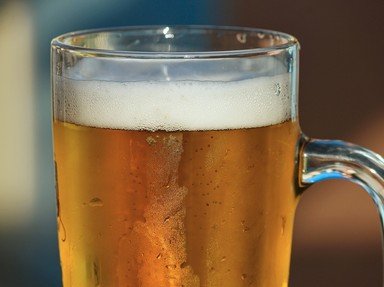Quiz Answer Key and Fun Facts
1. Let's start by making sure we know what "beer" is. One of these definitions is "worts" than the others. Which of these is NOT a good description of beer?
2. If you can "barley" wait to start brewing, you'll need some basic equipment. Which of the following items is unlikely to be needed if you are using the "full mash" method?
3. Let's "mash" on and get the beer ingredients together. Malt extract, or malted grain, hops, water and yeast are the only essentials. But what exactly is involved in the malting process?
4. We'd "bitter" move on to the next stage, mashing the malted grain to extract the sugars. The grain is cracked or milled then steeped in water at 65 degrees Celsius for two hours in a mash tun where the enzymes break down the starch. The sugary liquid, or wort, is run off and the residue is sparged. What is "sparging"?
5. There's an "oast" of varieties of hops, some used for their bitter flavour and some for their aroma. What is the Latin name for the hop plant?
6. Once the wort has been cooled, it is topped up with cold water to bring it to the desired specific gravity. Brewer's yeast is then added so that fermentation can begin. "Rack" your brain and choose the best definition of fermentation.
7. Almost there, don't "bottle" out now. Fermentation of the beer is complete, the brew has been "finished" and all that remains is to mature it in a suitable container. Which size cask would be most appropriate for 9 gallons of beer?
8. Allow me to "pint" you in the direction of the most appropriate glassware for your brew. Which of these glasses is incorrectly matched with the brew drunk from it?
9. Now you've tasted real ale, you might wish to spread the "wort". Which organisation, founded in 1971, became the leading campaigner against factory beers in the United Kingdom?
10. And before you "run off": "Brewprint" is the newsletter of the Boston Wort Processors.
Source: Author
bucknallbabe
This quiz was reviewed by FunTrivia editor
Leau before going online.
Any errors found in FunTrivia content are routinely corrected through our feedback system.


